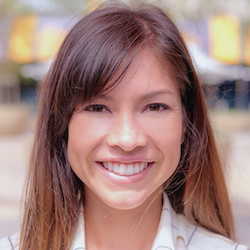
Baby boomers were born in the United States between 1946 and 1964, when births peaked at about 118 per 1,000 women. To put this generation’s size into perspective, in 2015, births dipped significantly to about 60 births per 1,000 women. By virtue of their relatively massive population, baby boomers have had a great deal of influence shaping America’s society, economy, policy and regulation.
Looking forward to 2029, about 78 million American baby boomers will be 65 years old. These aging boomers will be living longer than previous generations but will have higher rates of chronic disease, more disability and lower self-rated health.
Compared with previous generations, they are more likely to be obese (40%), have diabetes (almost 20%) and hypertension (more than 50%), and perhaps relatedly, are less likely to be engaged in regular exercise. With a higher incidence of chronic diseases and associated needs, these sobering statistics speak to a need to prepare to support this generation of older adults.
In addition, the aging in place preference already is clear. Adults, as they age, understandably want freedom and independence. They want to take care of themselves at home, free from nursing facilities and assisted living and even perhaps independent living communities. An increasing number of statistics show that this is true, although aging in place is not always possible for all seniors.
The challenge, then, is how to support the growing healthcare needs of a large population with more chronic illnesses while recognizing and respecting their desires for independence.
Technologic advancements are helping independent living and assisted living communities support seniors while allowing them to live as independently as possible. Older adults are showing increased awareness and acceptance of the role that technology can play in their lives. Knowing about or offering such technologies in place can increase the appeal of senior living among older adults, because the technology provides an independent and comfortable yet safe environment.
Emerging technologies
A score of new technologies and virtual assistants hit the market each day, and some already are demonstrating positive results:
- Reflexion Health’s Virtual Exercise Rehabilitation Assistant is a virtual rehabilitation assistant designed to help people recover after an injury or following surgery; it even can act as a falls prevention coach.
- SafetyNet Tracking Systems is a bracelet tracking device designed to help locate those with cognitive disorders such as Alzheimer’s.
- IBM Multi-Purpose Eldercare Robot Assistant, still in its prototype phase, is powered by Watson and designed to help assist seniors and their caregivers.
- Healthsense, recently acquired by GreatCall, is an example of a non-intrusive, even pervasive approach to monitoring the health and wellness of seniors, affording independence with the oversight of monitoring.
6 ways to assess technology
Engaged living, tracking, general wellness and recovery tools are the types of technologies that independent living and assisted living communities can incorporate to boost programs. Without guidance, however, it’s difficult to begin assessing the ones that will make a successful resident and business effect.
To help, here are six key technology traits that business owners and operators can consider when investing in any new program or product. Considering these traits likely will improve the quality of life among residents in your community, boost your overall program and reaffirm your investment and buying decisions.
- Education for impact. Education leads to positive outcomes and success. Ensure that the products and programs in which you are investing offer educational steps and procedures so that residents and staff can learn to incorporate the value of the intervention into their daily habits. Further, it’s good to find programs that include measurement and appropriate analytics to enable you to measure the progress of adoption and relative impact.
- Adaptability for durability. As much as possible, look for future-proof platforms. Most technology has an expiration date — when it will be eclipsed by the next innovation. Avoid the “gifted gadget” in favor of a system-based solution that seamlessly can incorporate new innovations. Test the program or product to see whether it is self-manageable, can adjust to different resident conditions and needs, and evolve with other technologies.
- Real-world performance. Innovative products and services typically are designed to meet a need, but many, unfortunately, come up short when applied in real-world situations. Review the primary data that support the claims of benefit, and ask to speak with prior users to get a sense of how generalizable the benefits may be to your specific circumstance.
- Affordability. Shop around, and check the types of payment models offered. Different payment models suit different needs related to business objectives and the product itself. Check all your options and plans, including leasing, to make the best decision for your organization. Always shop around before settling, because typically, similar and more affordable options exist in the market that in the end might be a better fit for your business. Do not sacrifice quality for a cheaper option, however, because less expensive models may require replacement sooner, causing your business to spend more money than it intended.
- Convenience. Accessibility and ease of use are critical to adoption and product loyalty, especially for the elderly. Most programs are successful because they are easy to use. As is sometimes said, “convenience is the new quality.” Look for simple, straightforward, intuitively obvious user interfaces with encouraging, positive feedback that automatically guides the user to the sweet spot of benefit.
- Value. Without having a significant and measurable value to the target population, none of the rest matters. The value proposition of any new innovation should be easy to describe and similarly easy to measure over time. Look for contracting that shares the risk of implementation, such that if promised value is not realized during some evaluation period, then your organization is not on the hook for a long-term contract.
Although the tectonic plates of the healthcare system and medical reform continue to shift and shake, many older adults and caregivers may not be paying enough attention to their future living situations. Prepare for this important and growing population by proactively researching programs, products and tools that can assist with wellness, recovery and general healthcare. Consider these six traits when investigating new technologies that are best suited for your business and its residents, no matter the political shimmy-shake.
Stephanie Grier, MS, ATC, CSCS, is clinical account manager at Reflexion Health. Her master’s degree is in kinesiology and biomechanics.
McKnight’s Senior Living welcomes guest columns on subjects of value to the industry. Please see our submission guidelines for more information.




